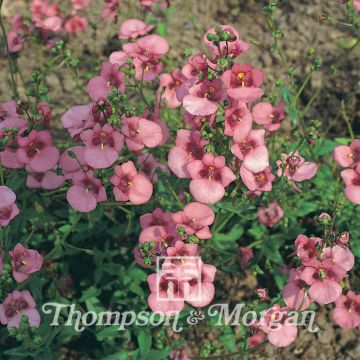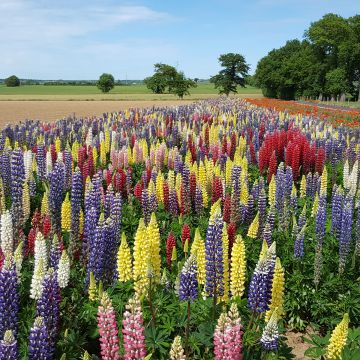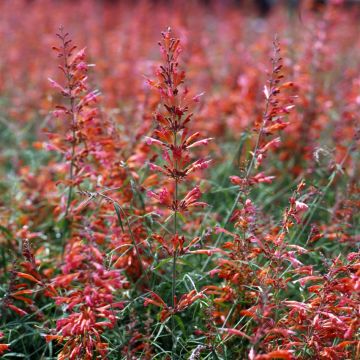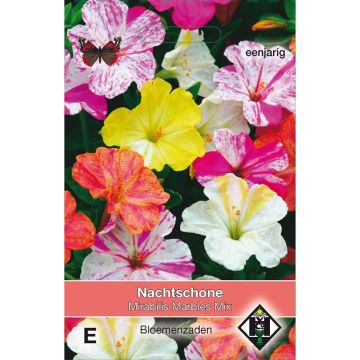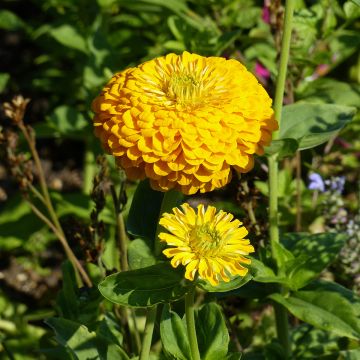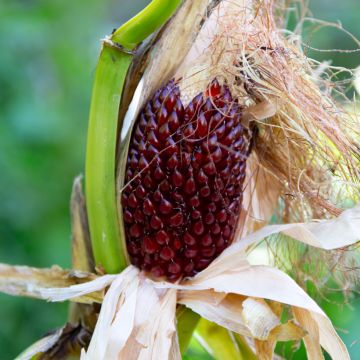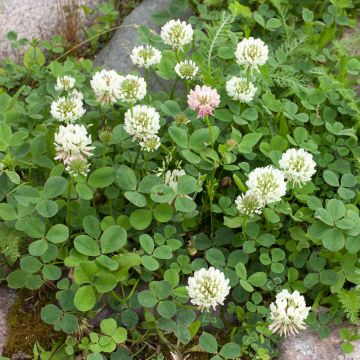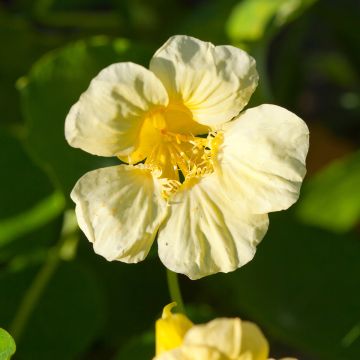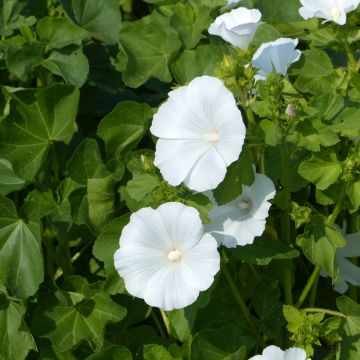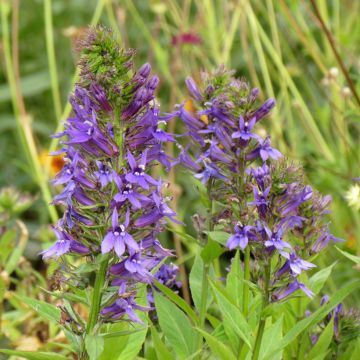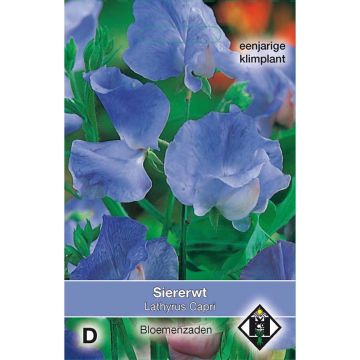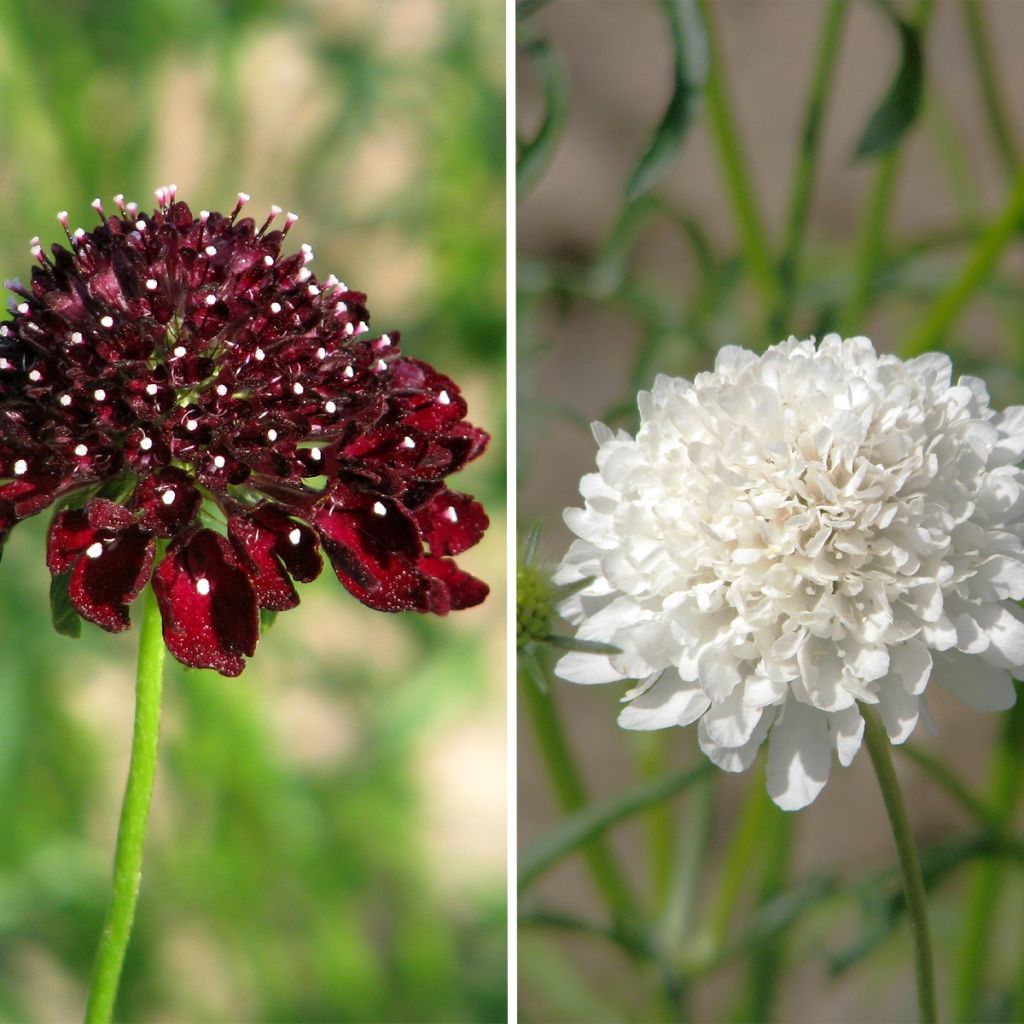

Graines de Scabieuse atropurpurea Ebony and Ivory
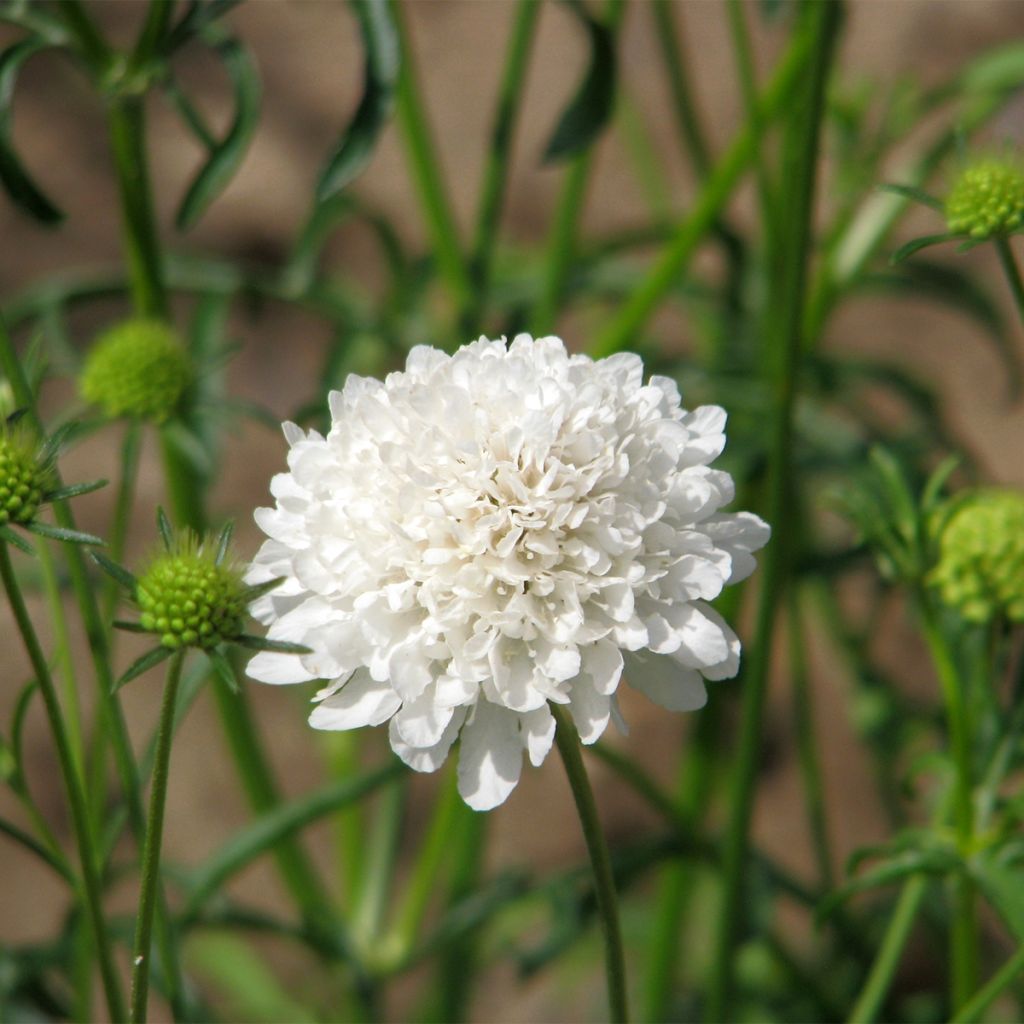

Graines de Scabieuse atropurpurea Ebony and Ivory
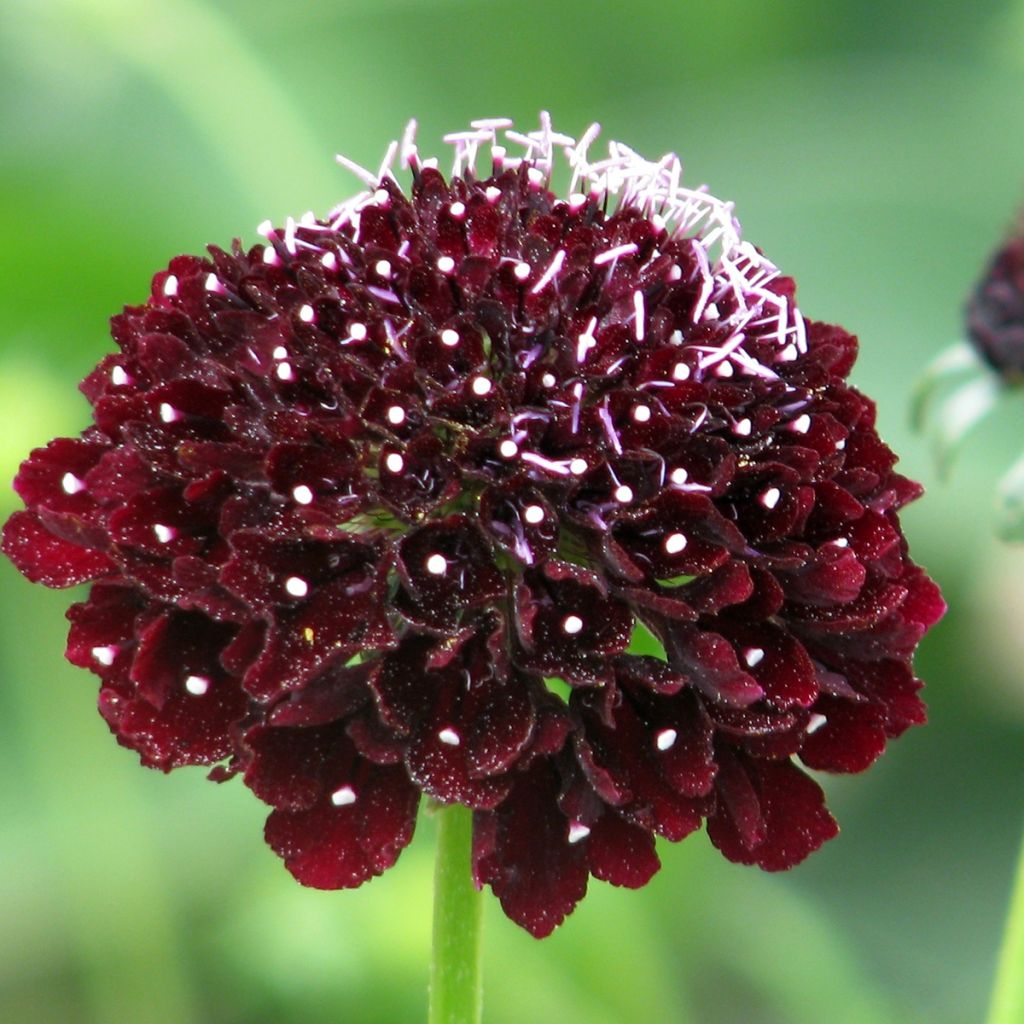

Graines de Scabieuse atropurpurea Ebony and Ivory
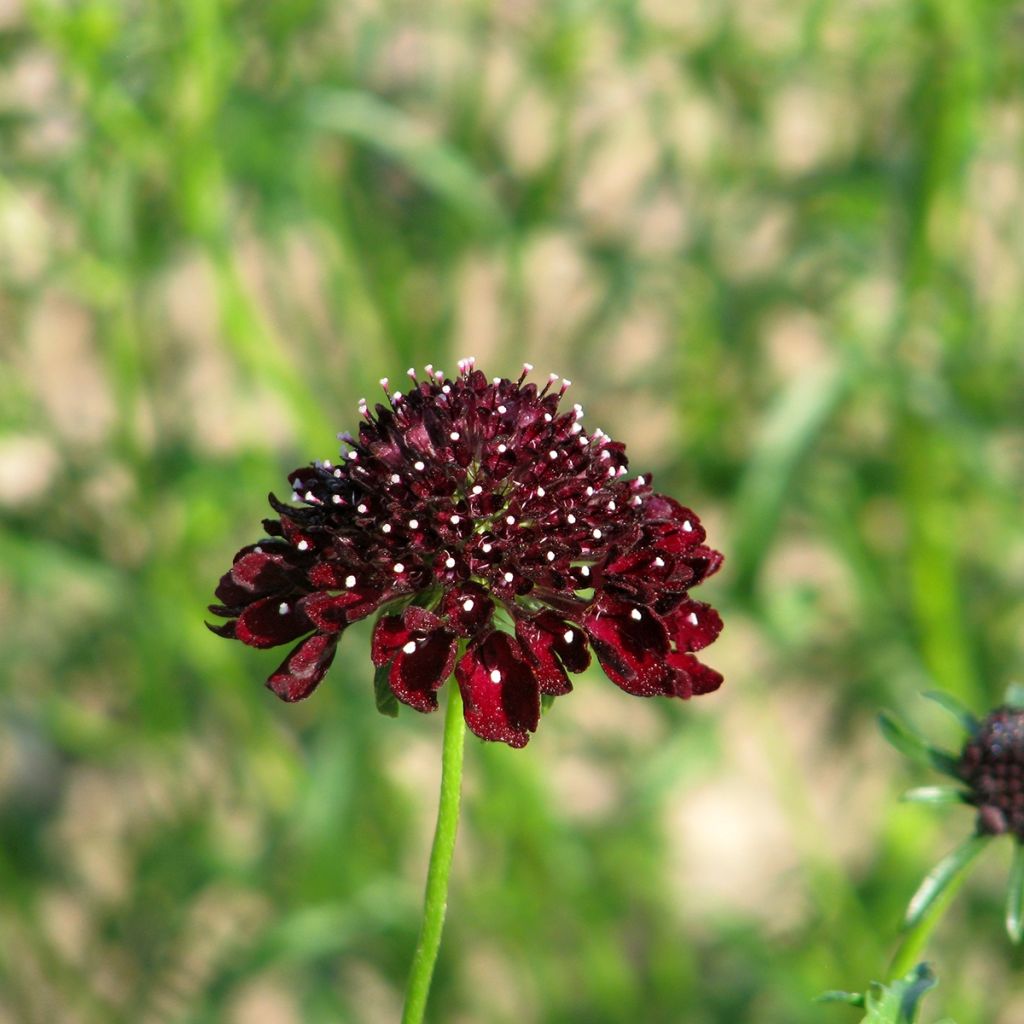

Graines de Scabieuse atropurpurea Ebony and Ivory
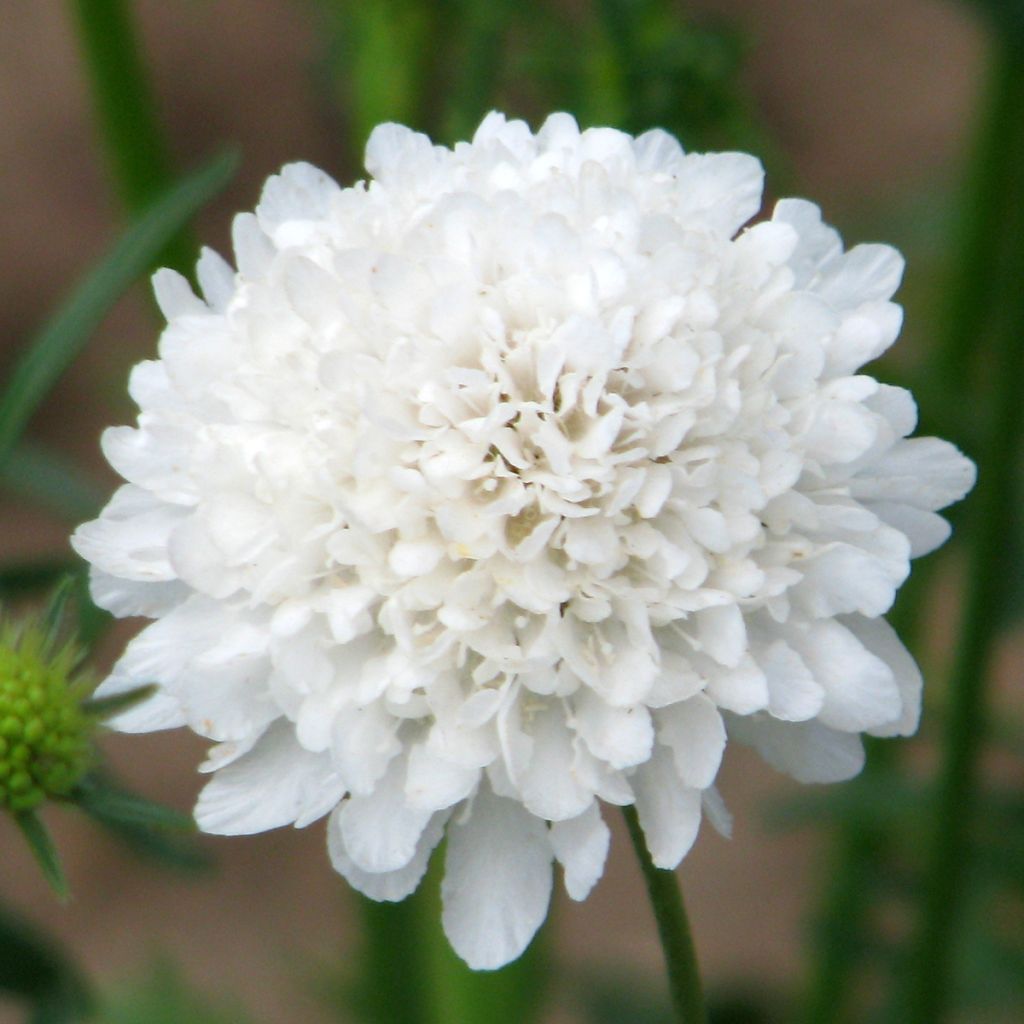

Graines de Scabieuse atropurpurea Ebony and Ivory
Scabiosa atropurpurea Ebony and Ivory Seeds
Scabiosa atropurpurea Ebony and Ivory
Sweet Scabious
Packet arrived intact - growth to be monitored after sowing and planting
Sylvie D., 24/02/2018
This item cannot be shipped to the selected country
Dispatch by letter from €3.90
More information
Schedule delivery date,
and select date in basket
This plant carries a 6 months recovery warranty
More information
We guarantee the quality of our plants for a full growing cycle, and will replace at our expense any plant that fails to recover under normal climatic and planting conditions.
Seed-only orders are dispatched by sealed envelope. The delivery charge for seed-only orders is €3.90.
Does this plant fit my garden?
Set up your Plantfit profile →
Description
This selection named Scabiosa atropurpurea Ebony and Ivory displays a contrasting duo of sweet scabious that create a theatrical setting of beautiful intensity with their big, sweet-smelling, almost black or ivory white flowers. This short-lived bushy perennial will bloom for a long time as long as care is taken to remove the wilted flowers. This plant is fully hardy, really easy to grow in the sun and is ideal in cottage garden beds, in the sun and in well-drained soil.
Scabiosa atropurpurea, also known as Sweet Scabious, is a plant native to Southern Europe that develops from a deep and extensive root system. This plant is often grown as an annual, although it is actually a short-lived perennial. The 'Ebony and Ivory' selection displays two varieties with blooms in contrasting colours. They form erect bushy clumps measuring 45 cm high and 30 cm wide and feature a very rapid growth. The deciduous foliage is composed of finely cut, coarsely toothed, lanceolate, grey-blue leaves. It grows at ground level, around the base of the plant, forming a flat rosette that lies flat on the ground. Flowering takes place from July to October. Each plant produces up to 400 flowers and numerous stems reaching 45 cm high, each bearing a single domed flower head that measures 5 cm in diameter and consists of a multitude of tiny flowers that are either purplish black or ivory white depending on the variety. The stamens look like miniature pincushions. The fragrant flowers are very melliferous and nectar-rich.
This star of gardens of the past has been somewhat neglected these last years but has crept back into the spotlight with extraordinary, new colours like those displayed by the Ebony and Ivory selection. They are graceful, elegant and far from being austere as their English name "mournful widow" would suggest. Sweet scabious are an excellent choice for planting flowerbeds but also for making bouquets. Combine them with garden pink, love-in-a-mist, cosmos and cornflowers...
Report an error about the product description
Scabiosa atropurpurea Ebony and Ivory Seeds in pictures
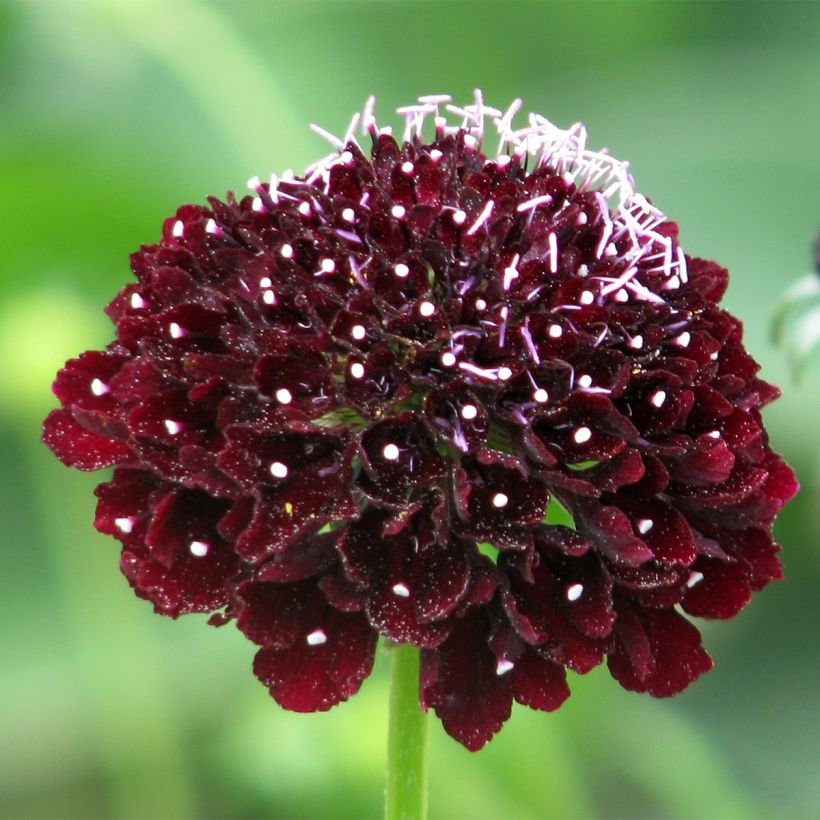

Flowering
Foliage
Plant habit
Botanical data
Scabiosa
atropurpurea
Ebony and Ivory
Dipsacaceae
Sweet Scabious
Cultivar or hybrid
Other Thompson and Morgan seeds
Planting and care
Sow in April-May in their final positions. Prepare the soil by raking it to a fine tilth and if necessary, loosen it by adding some coarse sand. Sow in rows 3 mm deep, spaced 30 cm apart. Another alternative is to sow the seeds in 7.5 cm pots which you will place at 18-20 °C until germination. Keep the soil moist, but not excessively so. Transplant the seedlings large enough to be handled, outside the frost period, keeping a spacing of 23 cm between each plant. The scabious plant likes sunny locations and well-drained soil that allows it to withstand the winter better. It adapts to slightly acidic, neutral or slightly alkaline soils. Regular but not excessive watering will accelerate its growth. Deadheading will encourage a long flowering period. This plant self-seeds easily in light soil but the new plants will not always reproduce faithfully the traits of their parents.
Sowing period
Intended location
-
, onOrder confirmed
Reply from on Promesse de fleurs
Flower seeds
Haven't found what you were looking for?
Hardiness is the lowest winter temperature a plant can endure without suffering serious damage or even dying. However, hardiness is affected by location (a sheltered area, such as a patio), protection (winter cover) and soil type (hardiness is improved by well-drained soil).

Photo Sharing Terms & Conditions
In order to encourage gardeners to interact and share their experiences, Promesse de fleurs offers various media enabling content to be uploaded onto its Site - in particular via the ‘Photo sharing’ module.
The User agrees to refrain from:
- Posting any content that is illegal, prejudicial, insulting, racist, inciteful to hatred, revisionist, contrary to public decency, that infringes on privacy or on the privacy rights of third parties, in particular the publicity rights of persons and goods, intellectual property rights, or the right to privacy.
- Submitting content on behalf of a third party;
- Impersonate the identity of a third party and/or publish any personal information about a third party;
In general, the User undertakes to refrain from any unethical behaviour.
All Content (in particular text, comments, files, images, photos, videos, creative works, etc.), which may be subject to property or intellectual property rights, image or other private rights, shall remain the property of the User, subject to the limited rights granted by the terms of the licence granted by Promesse de fleurs as stated below. Users are at liberty to publish or not to publish such Content on the Site, notably via the ‘Photo Sharing’ facility, and accept that this Content shall be made public and freely accessible, notably on the Internet.
Users further acknowledge, undertake to have ,and guarantee that they hold all necessary rights and permissions to publish such material on the Site, in particular with regard to the legislation in force pertaining to any privacy, property, intellectual property, image, or contractual rights, or rights of any other nature. By publishing such Content on the Site, Users acknowledge accepting full liability as publishers of the Content within the meaning of the law, and grant Promesse de fleurs, free of charge, an inclusive, worldwide licence for the said Content for the entire duration of its publication, including all reproduction, representation, up/downloading, displaying, performing, transmission, and storage rights.
Users also grant permission for their name to be linked to the Content and accept that this link may not always be made available.
By engaging in posting material, Users consent to their Content becoming automatically accessible on the Internet, in particular on other sites and/or blogs and/or web pages of the Promesse de fleurs site, including in particular social pages and the Promesse de fleurs catalogue.
Users may secure the removal of entrusted content free of charge by issuing a simple request via our contact form.
The flowering period indicated on our website applies to countries and regions located in USDA zone 8 (France, the United Kingdom, Ireland, the Netherlands, etc.)
It will vary according to where you live:
- In zones 9 to 10 (Italy, Spain, Greece, etc.), flowering will occur about 2 to 4 weeks earlier.
- In zones 6 to 7 (Germany, Poland, Slovenia, and lower mountainous regions), flowering will be delayed by 2 to 3 weeks.
- In zone 5 (Central Europe, Scandinavia), blooming will be delayed by 3 to 5 weeks.
In temperate climates, pruning of spring-flowering shrubs (forsythia, spireas, etc.) should be done just after flowering.
Pruning of summer-flowering shrubs (Indian Lilac, Perovskia, etc.) can be done in winter or spring.
In cold regions as well as with frost-sensitive plants, avoid pruning too early when severe frosts may still occur.
The planting period indicated on our website applies to countries and regions located in USDA zone 8 (France, United Kingdom, Ireland, Netherlands).
It will vary according to where you live:
- In Mediterranean zones (Marseille, Madrid, Milan, etc.), autumn and winter are the best planting periods.
- In continental zones (Strasbourg, Munich, Vienna, etc.), delay planting by 2 to 3 weeks in spring and bring it forward by 2 to 4 weeks in autumn.
- In mountainous regions (the Alps, Pyrenees, Carpathians, etc.), it is best to plant in late spring (May-June) or late summer (August-September).
The harvesting period indicated on our website applies to countries and regions in USDA zone 8 (France, England, Ireland, the Netherlands).
In colder areas (Scandinavia, Poland, Austria...) fruit and vegetable harvests are likely to be delayed by 3-4 weeks.
In warmer areas (Italy, Spain, Greece, etc.), harvesting will probably take place earlier, depending on weather conditions.
The sowing periods indicated on our website apply to countries and regions within USDA Zone 8 (France, UK, Ireland, Netherlands).
In colder areas (Scandinavia, Poland, Austria...), delay any outdoor sowing by 3-4 weeks, or sow under glass.
In warmer climes (Italy, Spain, Greece, etc.), bring outdoor sowing forward by a few weeks.



































